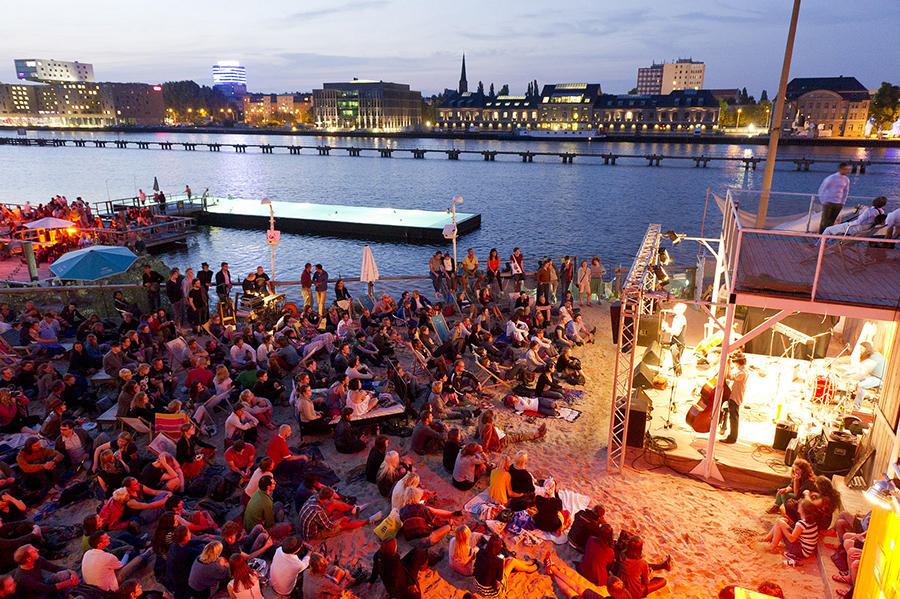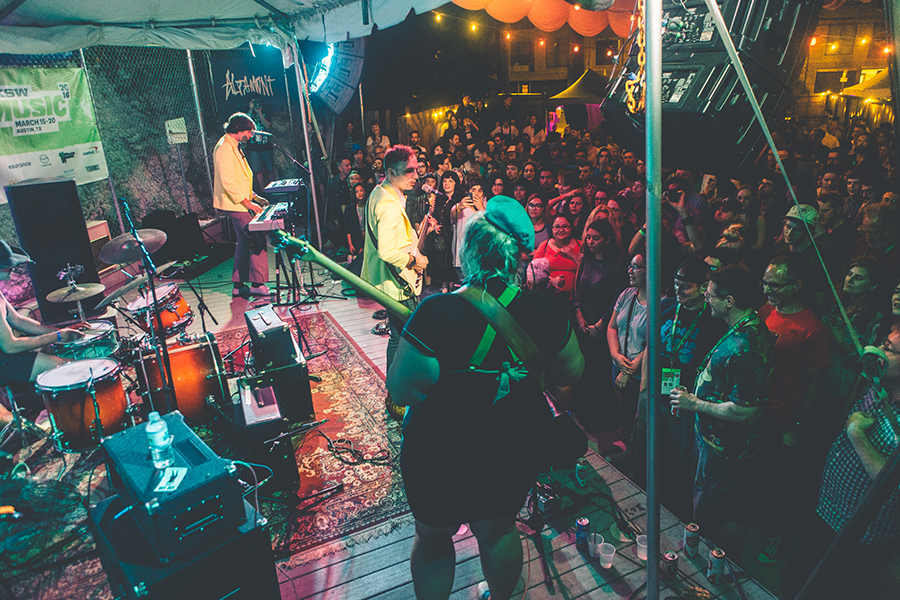
May 26, 2017
How to Make “Music Cities” in an Age of Rapid-Fire Gentrification
The takeaway from this year’s Music Cities Convention was clear: if we want vibrant cities, we must start championing music to developers and policy makers.

Courtesy © visitBerlin, Philip Koschel
Aside from Brexit, probably no story got more news coverage in the UK in 2016 than the closing of Fabric, a popular multi-story club in central London. Music venues and clubs can be some of the most iconic buildings in cities—CBGB in New York, Berghain in Berlin, Ryman Auditorium, (home to the Grand Ole Opry) in Nashville—and cities from Austin to Seoul often leverage these venues in order to brand themselves as ‘music cities’: vibrant, appealing places for people, businesses, and new real estate development.
But many of these spaces (and the musicians and fans who depend on them) are being threatened by rising rents, bureaucratic regulations, and unfavorable business rates. (A 2015 report commissioned by the city of Austin,the so-called ‘Live music capital of the world,’ found that “three quarters of Austin musicians make less than the Mean Annual Wage” in a city that has one of the most rapidly increasingly costs of living in the country.)
In Berlin last month, a group of musicians, venue owners, architects, developers and planners gathered for the Music Cities Convention, organized by Sound Diplomacy, to discuss the challenges cities currently face both in preserving and bolstering music culture and infrastructure. As Sound Diplomacy Founder and CEO Shain Shapiro commented at the opening of the summit, ‘‘Music needs to be championed in cities in the same way we champion education and transportation.”

Architects and planners are increasingly using computational design to create more intuitive and human-centered spaces—and cultural infrastructure is no exception. Dr. Shrikant Sharma of BuroHappold Engineering noted that modeling data collected from surveys, satellite images, and 3D street maps can help urban planners and developers better understand how people flow in and out of venues (and how they disperse to surrounding bars, restaurants, and transport afterwards). By using this information, planners and architects can design spaces that allow for better circulation and that better integrate into their surrounding neighborhoods.
Data collection is also being used to help map out a city’s existing musical infrastructure. The group Creative Footprint has been working to collect data on every music space in Berlin and hope to replicate the model in other cities. The Creative Footprint covers everything from informal venues to mega-venues and analyzes them across multiple criteria: whether the space serves interdisciplinary uses, the size and capacity, the external perception and reputation of the venue, etc. With this research and data on hand, music industry professionals are in a better position to make the case for the value of these assets within city development and planning.
According to Shapiro, musicians and music industry professionals, who tend to think and operate in the short term, need to start advocating to be included into city zoning and planning strategies that may be looking 5, 10, or 15 years in the future. “Cities write their local plans to reflect how land is going to be used for decades. If we don’t think about our music infrastructure and how we fit into those issues, then we’re constantly going to be the recipients of an end-use model. The building will just be there and then we’ll be inserted into it, rather than us having a responsibility and dialogue before, so we can play a part in how it’s created.”
Musicians, says Shapiro, also need to start learning to speak the language of developers. “We can’t just say, give us a music venue. What if that’s not a profitable use of land?” And while much of new development in cities is crowding out the creative industries, there are a growing number of developers who are investing in music venues. Peter Cornforth, who leads retail development for UK-based firm Benson Elliot Capital Management, has been advocating within his company for the ‘positive externality’ that music brings to mixed-use developments; according to him, music should sit in the value and not the cost side of real estate.
City officials and planners also need to be thinking about and advocating for music and cultural infrastructure. In Vienna, the local government has been converting older public buildings, like hospitals, into cultural and music venues as well as easing regulations so that cultural producers can more easily inhabit these and other public spaces for events.
If cities want to truly become music cities not just in name but in practice, they need to follow the lead of cities like London and Berlin and bolster their music ecosystems. One positive step in the right direction? Thanks to a very public ‘Save Fabric’ campaign and support from Mayor Sadiq Khan and Night Zcar Amy Lame, Fabric did re-open this year. Hopefully this will be the first of many.
Recent Viewpoints
Viewpoints
Navigating the Path to Net Zero





